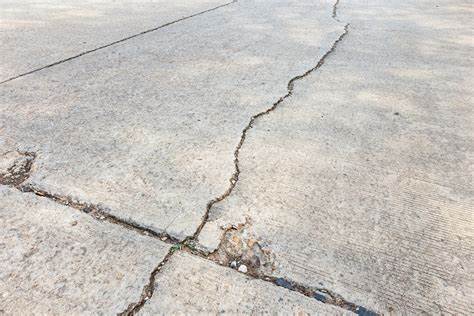How To Patch Up Cracks In Concrete Driveway In Escondido?

- Before you start patching up the cracks, it’s crucial to prepare the surface properly. Begin by cleaning the cracks thoroughly. Remove any loose debris, dirt, or vegetation that may have accumulated in the cracks over time. You can use a wire brush, a pressure washer, or a chisel for this purpose. By cleaning the cracks, you ensure that the patching material adheres effectively to the concrete, providing a long-lasting repair.
- Selecting the appropriate patching material is essential for a successful repair. There are various products available, including concrete patching compounds, epoxy fillers, and vinyl patching. The choice largely depends on the size and depth of the cracks. For small, shallow cracks, concrete patching compounds are ideal. They are easy to work with and can be applied directly to the cracks. However, for larger and deeper cracks, consider using epoxy fillers or vinyl patching. These materials offer superior bonding and strength, making them suitable for more substantial repairs. Always follow the manufacturer’s instructions for mixing and applying the chosen patching material.
- Once you’ve prepared the surface and chosen the right patching material, it’s time to fill the cracks. Use a trowel or putty knife to apply the patching material into the cracks. Make sure to press the material firmly into the cracks, eliminating any air pockets. For larger cracks, apply the material in layers, allowing each layer to dry before adding the next one. Smooth the surface of the patch to ensure it blends seamlessly with the surrounding concrete.
- After filling the cracks, it’s essential to allow the patching material to cure properly. The curing time will vary depending on the type of material used, so follow the manufacturer’s recommendations. During this time, it’s crucial to protect the patched areas from foot traffic and heavy loads. Once the patching material has fully cured, consider applying a concrete sealer to protect the entire driveway. A high-quality concrete sealer will not only enhance the appearance of your driveway but also provide an additional layer of protection against future cracks and damage. Regularly resealing your driveway can help prolong its lifespan.
- Prevention is key to avoiding future cracks in your concrete driveway. Make it a habit to inspect your driveway regularly for any signs of cracks or damage. Address any new cracks promptly to prevent them from worsening over time. Additionally, avoid using de-icing chemicals during winter months, as they can accelerate the deterioration of concrete surfaces.
FAQs
How Do I Determine If I Need To Patch Up Cracks In My Concrete Driveway?
Cracks in your concrete driveway should be addressed if they are more than a quarter-inch wide, deep, or if they pose a tripping hazard. Regular inspections will help you identify cracks that need repair.
Can I Use Regular Cement To Patch Up Cracks In My Concrete Driveway?
While regular cement can be used for small repairs, it’s recommended to use specialized concrete patching compounds or epoxy fillers for more durable and long-lasting results.
How Often Should I Reseal My Concrete Driveway To Prevent Future Cracks?
Concrete driveways should be resealed every 2 to 5 years, depending on the climate and usage. Resealing helps protect the surface from moisture, UV damage, and other factors that can lead to cracks.
Conclusion
A cracked concrete driveway doesn’t have to be a long-term problem. With the right tools, materials, and techniques, you can successfully patch up those unsightly cracks and restore your driveway’s appearance and functionality. Remember to prepare the surface, choose the right patching material, fill the cracks carefully, cure and seal the repaired areas, and maintain regular inspections to prevent future damage. By following these five tips, you’ll be well on your way to a beautifully restored concrete driveway that will last for years to come. For more information, contact Concrete Contractor Escondido at (760) 993-3343.